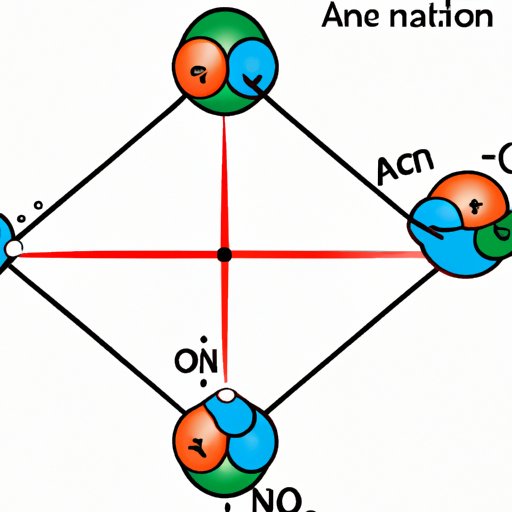Introduction
Have you ever wondered why atoms stick to each other? Why do they form bonds? Understanding the mysteries of atomic bonding has been a topic of fascination for scientists and non-scientists alike. This article aims to provide an overview of the principles of bonding, its importance in nature, the science behind it, and a journey into its fascinating world.
The Mystery of Atoms: Understanding Why They Form Bonds
Atoms are the building blocks of everything around us, and understanding how they interact with each other sheds light on the properties of matter. Bonding refers to the forces that hold atoms together, and the electrons in their outer shells play a crucial role in bonding.
Electrons behave according to the Pauli Exclusion Principle, which dictates that no two electrons can occupy the same energy level or subshell. The outermost electrons of each atom are called valence electrons and are involved in bonding. There are three major types of bonds: ionic, covalent, and metallic.
In an ionic bond, one atom donates its valence electron(s) to another, leading to the formation of positively and negatively charged ions. Covalent bonding occurs when atoms share valence electrons in a way that fills their outermost shells. Metallic bonding involves the sharing of electrons in a “sea” of positively charged metal ions.
Examples of bonding in nature include the salt we put in our food, crystals such as diamond, and metallic substances.
The Importance of Bonding: Why Atoms Stick Together
Bonding is a fundamental process that plays a crucial role in nature. It is essential for the formation of compounds and the occurrence of chemical reactions. Without bonding, water would not exist, and the substances that make up our bodies would not hold together.
Bonding leads to the formation of everyday objects, from the clothes we wear to the food we eat. Carbon-based compounds, such as carbohydrates, proteins, and fats, are particularly important in biology and are held together by covalent bonds.
In chemical reactions, atoms are rearranged or broken apart, leading to new substances with different properties. The reactivity of substances relies on their bonding properties, making bonding a fundamental aspect of chemistry.
Breaking it Down: The Science of Atomic Bonds
Chemical bonding involves a deep understanding of the principles of physics and chemistry. Atoms can form bonds through the sharing or transferring of electrons. The type of bond formed depends on the electronegativity difference between the atoms involved.
The electronegativity of an atom is a measure of its ability to attract electrons. In ionic bonding, the electronegativity difference between two atoms is large, leading to the transfer of electrons to form ions. Covalent bonding occurs when atoms have similar electronegativity and share electrons. Metallic bonding arises from the sharing of electrons between metal ions.
Technical applications of bonding include semiconductor technologies, where special types of covalent bonding play a crucial role. The study of bonding in materials science aims to understand how atomic-level interactions affect the properties of bulk materials.
The Bonds That Bind: A Journey into the World of Atoms
The process of bonding occurs on a scale so small that it is invisible to the naked eye. The journey into the world of atoms reveals how unique atomic properties result in different types of bonds and materials.
For example, diamond is a crystal composed of carbon atoms held together by covalent bonds. The arrangement of the atoms creates a strong and stable structure that makes diamond one of the hardest substances on earth.
Scientists have studied the behavior of atoms for centuries, and new discoveries are still being made. The discovery of the covalent bond by Gilbert Lewis in 1916 revolutionized the world of chemistry and opened up new avenues of scientific exploration.
Using bonding principles, scientists are developing new materials, such as superconductors, that have unique properties and commercial applications.
From Atoms to Molecules: Understanding the Basics of Bonding
For beginners, the concept of bonding may seem overwhelming. However, it is a fundamental topic that is essential for those studying chemistry and related subjects.
The basic principle of bonding involves understanding the role of valence electrons, which are the outermost electrons involved in bonding. The type of bond that forms depends on the number of valence electrons involved and their electronegativity difference.
Studying bonding involves learning about the different types of bonds, including their properties, strengths, and weaknesses. Understanding the principles of bonding in detail will enable students to apply them in different contexts.
Conclusion
In summary, bonding is a fundamental process that plays a crucial role in nature, chemistry, and materials science. The various types of bonds involved in atomic interactions reveal the unique properties of different materials.
Developing a deep understanding of bonding principles will enable students to apply them in various contexts and make new scientific discoveries. For anyone fascinated by the mysteries of atoms and the materials around us, bonding is a fascinating and essential topic to explore further.
